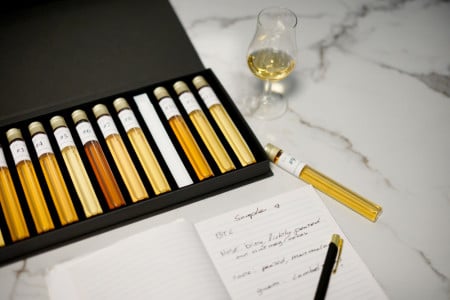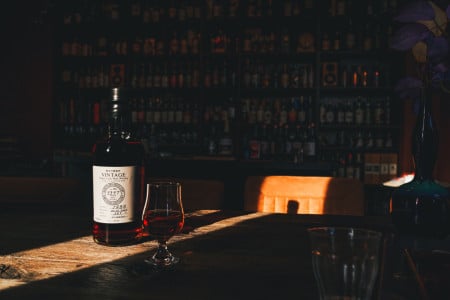López de Heredia in Rioja produces some of Spain’s most admired and beloved wines. Here are 10 things you should know about this famous producer of traditional, age-worthy and high-quality Rioja wines:
1. It’s a family affair
López de Heredia has always been family owned. Nowadays, the 4th generation (Maria José Lopez de Heredia and her sister Mercedes) run the family business. Their great-grand father Don Rafael López de Heredia was a young man from Chile who came to Spain to study wine. He was the one who saw the great potential of the specific climate and terroir of Rioja Alta. In 1877, he founded the bodega in Haro as one of the first three bodegas in the Rioja region.
2. Old school Rioja
Don Rafael started by making bulk wine for the French market. In 1877, phylloxera was at its height and at the other side of the border - in Bordeaux - almost all vines were destroyed and wine from Rioja was seen as a suitable alternative. The first bottled wines from López de Heredia were in fact imitations of French wines, for example Rafael’s ‘Sauternia’, a sweet white wine in the style of Sauternes. Another name of a bottling from that time is ‘Rioja Cepa Borgogña’, a Burgundy-style red with a high percentage of pinot noir. Apart from the fact that nowadays López de Heredia does not make sweet whites or pinot dominated reds anymore, the method of wine making has not changed fundamentally in these 143 years. Maria José López de Heredia is determined not to change many things in the winery: ‘If something works, why change it?’
3. 100% estate bottled fruit
As a rarity in Rioja, López de Heredia uses only estate bottled fruit from their own vineyards. Viña Tondonia (170 ha!) is without any doubt the most famous vineyard of the estate. This spectacular vineyard is situated in a shell-like depression next to the river Ebro, which serves as a border with the Rioja Alavesa subregion.
4. Four famous vineyards
In the case of the Tondonia vineyard, the name of the vineyard is also the name of the wine. However, López de Heredia owns three more vineyards also set in the Rioja Alta region. These are the "Viña Cubillo", "Viña Bosconia" (of which red Rioja wines are made from) and "Viña Zaconia". Wines from the Zaconia vineyard you might know as the white wine Viña Gravonia. This is a fantasy name Don Rafael came up with, having the ambition in mind to make a wine in the style of the great whites from Graves.
5. 100% American oak
In the beginning days of the bodega, every type of wood (like chestnut and cherry wood) that the wine makers could get their hands on was used for the barrels. However, after the discovery that oak was less invasive in overpowering the fruit character in the wine, only oak was used. Nowadays, all barrels are made made of American oak in Bordelais style (225 liters). All barrels are produced and maintained and restored in López de Heredia’s own coopery at the winery.
6. Tondonia Reserva vs Gran Reserva
Strictly looking at the Spanish wine laws and specifically those of Rioja DOCa, all Tondonia wines from López de Heredia, the whites, reds and rosé are in fact Gran Reserva wines. The minimal maturation time for Gran Reservas in Rioja is 5 years, of which at least 2 years in barrel and another 2 years in bottle. All Tondonias, both the Reservas and the Gran Reservas, that leave the López de Heredia cellar are aged a lot longer than that. Still, a distinction is made between Reserva and Gran Reserva, where Gran Reserva is only granted the highest quality of wine, only made in the best vintages.
7. White Tondonia vs red Tondonia
At López de Heredia, the whites are made in almost exactly the same way as the reds. Just like the red wines, the Tondonia blanco is made with skin contact during 2 or 3 days. Apart from the amount of days of skin contact and the different varietals that are used, there are no other significant differences in the winemaking process. White Tondonia is made of Viura (90%) and Malvasía (10%) whereas red Tondonia is a blend of Tempranillo (75%), Garnacha (15%), Graciano and Mazuelo (10%). Both white and red wines are aged for 6 (Reserva) or 10 (Gran Reserva) years in barrel.
8. One of the world’s longest matured rosé wines
López de Heredia also produces a world class rosé wine from its Viña Tondonia. This wine is a blend of Garnacha (60%), Tempranillo (30%) and Viura (10%) and is also made with a couple of days of skin contact. Do not expect a pink, summery, light weight wine. This rosé is serious business! The wine is only released on the market after 10 (!) years and aged for at least 4 years in barrel, making this wine a Gran Reserva. The color of the wine can best be described as that of an onion skin.
9. Animal blood on the fermenting vats
This might sound a little strange, but the bodega’s vats are sealed and maintained using a very old technique: by using animal blood. This protein apparently helps to keep the barrels hydrated. Historically, blood was also used for fining wines, but this has been forbidden by modern laws.
10. Spiders welcome in the cellar!
In the cellars of López de Heredia, spiders are a wine maker’s best friends. Apart from the fact that that their presence adds to the historic ambience of the place, the spiders eat the mots that attack the corks in the bottles. This is also the reason why all Gran Reserva wines - that spend so many years in the cellar - have wax seals, preventing insect to reach the cork.







